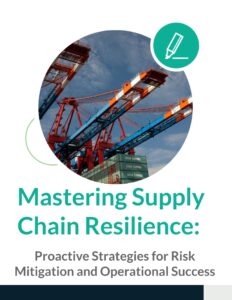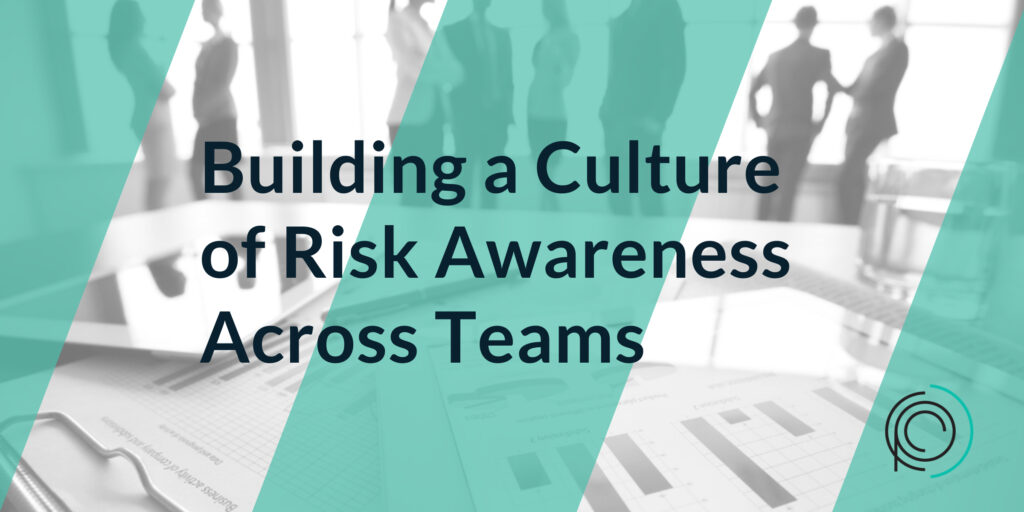Conducting business in today’s environment is becoming increasingly complex, characterized by rapid technological advancements, shifting market dynamics, and evolving consumer expectations. With this complexity comes inherent risk, as organizations face uncertainties that can impact their operations and bottom line. However, while risk can’t be entirely eliminated, it can be managed more effectively if everyone within the organization plays an active role in risk awareness and mitigation.
The key to achieving a robust approach to risk management is to build a culture of risk awareness that permeates all teams and levels of the organization. This blog post will delve into why fostering such a culture is essential for long-term success and how decision-makers can implement strategies to encourage it within their organizations.
Risk awareness goes beyond the confines of the leadership team and cannot be relegated to a single department. It’s not merely about having a dedicated risk management team or a few policies in place; rather, it involves cultivating a mindset that recognizes the importance of risk in everyday operations. For risk management to be truly effective, every team member must be attuned to the potential risks associated with their tasks and responsibilities. This kind of awareness empowers individuals to identify risks early, facilitating proactive management strategies that can prevent small issues from escalating into larger, more costly problems.
Moreover, fostering a culture of risk awareness can enhance collaboration among teams, as individuals feel more confident in sharing information about potential risks and challenges. Training sessions, workshops, and open discussions about risk can help cultivate this environment, ensuring that employees at all levels understand the significance of their contributions to overall risk management. By making risk awareness a shared responsibility, organizations can create a resilient workforce capable of navigating the complexities of the modern business landscape.
The Importance of Risk Awareness in Business
Risks can emerge from any part of an organization, often in ways that are not immediately visible. Whether it’s an operational inefficiency, a security vulnerability, or a compliance lapse, early detection and reporting of these risks are crucial to safeguarding the organization’s integrity and performance. Employees at all levels, from the frontline to management, can provide valuable insights into potential risks, often discovering warning signs long before they become apparent to leadership.
Consider this: a frontline employee might notice a repeated error in a manufacturing process that, if left unaddressed, could lead to significant defects and costly recalls. This employee, with hands-on experience, may be the first to identify a pattern that others overlook. Similarly, an IT staff member might detect unusual network activity that could signal a cyber threat, such as a potential data breach or an intrusion attempt. These early warnings are essential for preventing larger issues that could harm the organization’s reputation and financial standing.
By encouraging a risk-aware culture, businesses can empower their employees to voice concerns and share their observations without fear of repercussions. This openness fosters an environment where proactive risk management is valued and prioritized. Training sessions, workshops, and regular communication about risk awareness can enhance employees’ understanding of potential risks and the impact they may have on the business. Ultimately, when organizations harness the unique perspectives of their employees, they can identify and mitigate risks more quickly, ensuring a more resilient and agile business model.
Educating Employees on Risk Management
One of the most effective ways to cultivate a risk-aware culture within an organization is through comprehensive education. Implementing regular risk training programs not only ensures that employees understand how to identify and report potential risks but also fosters a proactive mindset towards risk management. These programs can cover a broad spectrum of risks—including operational, financial, strategic, and compliance-related—and provide practical, actionable guidance on how to manage them effectively.
Workshops and simulations are particularly effective tools in this educational endeavor. By employing real-life scenarios, these interactive sessions help employees grasp the potential impact of different risks. For instance, a simulation might involve a data breach scenario where employees collaborate to contain the breach, communicate with stakeholders, and implement corrective actions in a structured, controlled environment. This hands-on experience is invaluable, as it not only reinforces theoretical knowledge but also builds confidence in their ability to handle crises.
Furthermore, creating a culture of openness is crucial. It’s essential that employees feel comfortable discussing risks without fear of reprimand. Encouraging questions and conversations around risk can lead to a richer understanding and a more engaged workforce. Regular feedback loops can also be implemented, allowing employees to share their insights and experiences related to risk management, thus fostering a continuous learning environment.
Additionally, clear reporting channels are vital for an effective risk management strategy. Employees need to know exactly how and where to report potential risks. This could be facilitated through an online portal designed for ease of access, a dedicated email address specifically for risk reporting, or even a hotline that provides immediate assistance. Ensuring that these channels are well-publicized, easily accessible, and straightforward encourages employees to report risks without hesitation, ultimately contributing to a safer and more resilient organization.
Encouraging Proactive Risk Identification
For a risk-aware culture to truly thrive within an organization, it is essential that employees feel empowered to take ownership of risk management responsibilities. A well-implemented open-door policy can be instrumental in fostering this environment. When employees believe they can voice their concerns without fear of negative repercussions or judgment, they are more likely to proactively report potential risks and suggest meaningful improvements. This openness not only enhances transparency but also builds trust between employees and management, creating a more dynamic and responsive workplace.
Furthermore, recognition programs can significantly boost motivation among employees to engage in the vital process of risk identification. By rewarding individuals who successfully identify and report risks or propose process improvements, organizations can reinforce the critical importance of proactive risk management. Such rewards might take various forms, including monetary bonuses, public acknowledgment during company meetings or through internal newsletters, or even opportunities for career advancement. This recognition not only celebrates individual contributions but also serves as a powerful reminder to the entire workforce about the value placed on risk awareness.
Cross-departmental collaboration emerges as another powerful strategy for fostering a culture of risk awareness. By encouraging various teams to share insights and information about identified risks, organizations can create a more comprehensive and holistic view of their entire risk landscape. For instance, the marketing team may have valuable insights regarding reputational risks that the finance team hasn’t fully considered, while the operations team might be aware of supply chain vulnerabilities that the HR team is currently unaware of. Facilitating regular interdepartmental meetings or collaborative workshops can enhance this exchange of information, ultimately leading to a stronger, more resilient organization better equipped to navigate potential challenges. By integrating diverse perspectives, companies can better anticipate risks, leading to more informed decision-making and enhanced overall performance.
Integrating Risk Awareness into Everyday Operations
Embedding risk awareness into daily activities is crucial for ensuring it becomes second nature to employees, ultimately enhancing the organization’s overall resilience. One effective way to achieve this is by integrating risk assessment directly into decision-making processes. Before embarking on any new project, teams should conduct a thorough evaluation of potential risks, considering not only immediate challenges but also long-term implications. This evaluation should include developing detailed mitigation strategies aimed at addressing identified risks. This proactive approach should continue throughout the project’s lifecycle, with teams engaging in regular reviews and making necessary adjustments as the project evolves.
Holding regular risk reviews is another effective strategy for fostering a culture of risk awareness. These meetings serve as a dedicated forum for teams to engage in open discussions about ongoing risks, share updates on their mitigation efforts, and identify new risks that may have emerged since the last review. By making risk reviews a routine part of the project management process, organizations can maintain a continuous focus on risk management, ensuring that it remains at the forefront of operational priorities. Furthermore, these discussions encourage a sense of collective responsibility, as team members feel empowered to contribute to the risk management dialogue.
Cultural alignment plays a pivotal role in successfully integrating risk awareness into everyday operations. For risk management practices to be effective, they must be closely aligned with the overarching company culture, ensuring they resonate with employees’ values and behaviors. For instance, if a company’s culture emphasizes innovation and creativity, risk management practices should underscore how proactive risk identification can empower teams to explore and implement more innovative solutions. This not only enhances employee buy-in but also reinforces the idea that risk management is not just a compliance requirement but an integral part of fostering a dynamic and forward-thinking work environment. By weaving risk awareness into the fabric of the company culture, organizations can cultivate a workforce that is not only aware of potential risks but is also proactive in addressing them, ultimately leading to more successful outcomes.
Conclusion
Building a culture of risk awareness across teams is not just a strategic advantage; it’s a necessity. Remember your team has first-hand experience in your day-to-day operations. By involving everyone in the organization, from top leadership to frontline employees, businesses can create a robust risk management framework that identifies and mitigates risks before they escalate.
Leaders should take the time to evaluate their risk management training and culture. Engaging employees at all levels in risk awareness not only protects the organization but also empowers employees to contribute to its success. For those ready to take the next step, connect with one of our experts today to get started.







